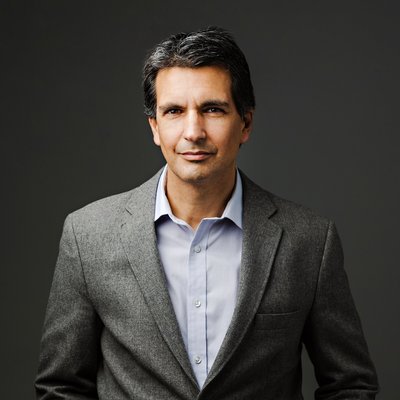Yeah, so Paul, that's a huge question and really well posed by the way, because usually people ask me, "How many jobs are going to be lost?" And that's where they stop. And what I really like about the way that you pose a question is yes, there's a jobs question, but there's also the inequality question. Definitely there's going to be some job loss in the coming decade or something like that. And I'll mention more about that in a second. As economists, we very often say, "There's going to be some job loss, but it's okay because there's also going to be job creation over the medium to long run and net net everything is going to be great because whatever jobs are lost, new jobs are created." I do think that's true. Barring the AI singularity, it's going to be true with AI as well.
And so I'm not overly worried, except that this transition period can be really difficult for people. if you have say, truck drivers that are being displaced by autonomous trucks, it's not clear how easily they're going to be able to make the transition to other kinds of jobs. And economists have too often been just too quick to dismiss the transitory pain. if we look back at the industrial revolution, today most of us would say it was a great thing. Obviously maybe not the smokestacks and the conditions, whatever, but overall in the long arc of history is a great thing. But for about an entire generation, real wages didn't really go up. And so if you had gone into the workforce exactly at the beginning of the industrial Revolution, you would've said, "This was terrible." Instead of being out on the land, I'm now in this grimy factory, I'm not getting paid anymore. It's unhealthy. And so the transitions really matter. And that's the first point I want to make.
And by the way, the best estimates I've seen are that about one in five jobs are not going to really be impacted by AI. About three in five jobs, they're going to see between 10 and 50% of their tasks being impacted. And about one in five are going to see more than half of their tasks being impacted. So they're going to be very impacted. And those are probably jobs like translators and writers and journalists, to some extent programmers, but again, I think they might just shift a little bit what they do. So I think the jobs issue is absolutely huge.
But the second part of what you asked Paul is, what about inequality? And that's the thing that is not just transitory, that tends to stay in the long run. However, for the first time we have a technology before us that might actually decrease inequality. The last big technologies, we had industrial robotics, and industrial robotics basically displaced factory workers who tended to be towards the bottom of the skill distribution, and therefore it increased inequality in society, income inequality in society. And then we had computers and computers mostly displaced people in the middle of skill distribution, so back office workers and clerks, etc., etc. And those folks either could get upskilled and become white-collar workers or they ended up in service jobs. In either case, it created a polarization, and so it also increased inequality.
But for the first time, we have a technology that it would seem is mostly going to be displacing white-collar workers, or put differently or looked at it from the other side, is it's going to be empowering lower-skilled workers to perform at the level of a higher-skilled worker. So this is something that we haven't really talked about yet, but the way that I think about AI is it's a machine, it's a model, it's a tool for capturing and sharing tacit knowledge. Because what it's basically doing is it is looking at a whole bunch of data that embodies this tacit knowledge. So for example, doctors every day are making diagnoses and they're coming up with treatment plans. And if you look at the data of what actions they've been taken, what their diagnoses were, what actions they're taking, what the outcomes are, you can create a model of what the best action is in any circumstance, in any environment.
Now give this model to a nurse, that nurse can now be empowered with this AI model to perform at the level of a doctor. And so what is going to happen is that we are going to be empowering less well-trained people with less tacit knowledge, with the tacit knowledge of those that have more of it to perform at almost that same level or perhaps even at that same level. This is terrible for family doctors, my wife is one, but this is absolutely fantastic for that nurse and maybe even someday that PSW.





